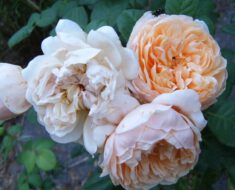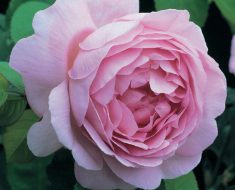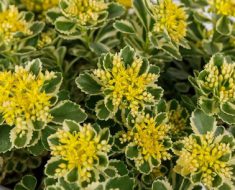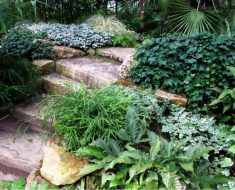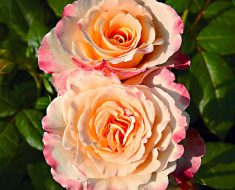HEATHCLIFF – English rose with large rosette-shaped bowl-shaped flowers. The flowers smell like a mixture of rose oil and cedarwood. The bush is vertically directed. The name of the rose HEATHCLIFF was given by one of the heroes of the novel by E. Brontë from Wuthering Heights.
Characteristics of the HEATHCLIFF rose
- Group – English Roses
- Subgroup – English hybrids Old roses
- Basic shape – bush (scrub)
- Height – 1.5 m
- Diameter – 1 m
- Bush shape – oval
- Flower color – crimson
- Number of petals – 105
- Flower shape – cup-shaped , rosette
- Flower size – 8 – 12 cm
- Blossoming shape – clusters
- Blossoming type – repetitive
- Aroma – light
- Foliage – dark green, leathery, large, shiny, abundant
- Shoots – straight, vertically directed, with thorns, can bend under the weight of flowers
- Features – in cool climates for a long time builds up mass
- Resistance to powdery mildew – medium
- Resistance to black spot – medium
- Cold hardiness – 5 – 11 USDA zones
- Breeder – D. Austin
- Catalog name – Ausnipper
- Year of introduction – 2012
- Soil – all types of
- pH – may be slightly fluctuating from neutral
- Drainage – required
- Plot – sunny / partial shade
- Container – yes
- Shtamb – yes
- Landing types – various mixed plantings, hedges
Take care of your HEATHCLIFF roses like this:
- Planting roses is the most important step in caring for them. Plants prefer sunny areas with good drainage. They grow on almost all types of soil. The soil must be loose in order to allow sufficient water and air to pass to the root system.
- Watering. The HEATHCLIFF rose is watered as needed – from 10 liters of water per 1 adult bush, on average, 2-3 times a week. In dry times, watering is increased. If the plant grows in a container, then watering is usually more frequent. In both cases, it all depends on the weather conditions.
- Fertilizing is carried out at least 2 – 3 times during the growing season. It can be both mineral fertilizers and organic. Roses are also given mineral complexes that are introduced by spraying. For roses growing in pots, feeding is increased, but the doses are smaller.
- Pruning roses depends on the group to which they belong. Pruning is done twice: in the summer, faded parts are constantly cut off to stimulate the appearance of new flowers, and in the fall, winter or early spring, pruning is carried out to form the plant and prevent diseases or pests hiding under the bark of the plant. Potted roses are also pruned.
- Loosening and weeding the soil around the English rose bush HEATHCLIFF is needed to circulate air, moisture and nutrients for the root system. To minimize your labor costs, use mulching. This farming technique will help reduce weeds and keep the soil moist longer. This also applies to container roses.
- Shelter for the winter is especially needed if the subzero temperatures are very low or the winter is characterized by frequent long thaws, which are suddenly replaced by minus. Roses growing in pots must be covered.
Enjoy your cultivation!
